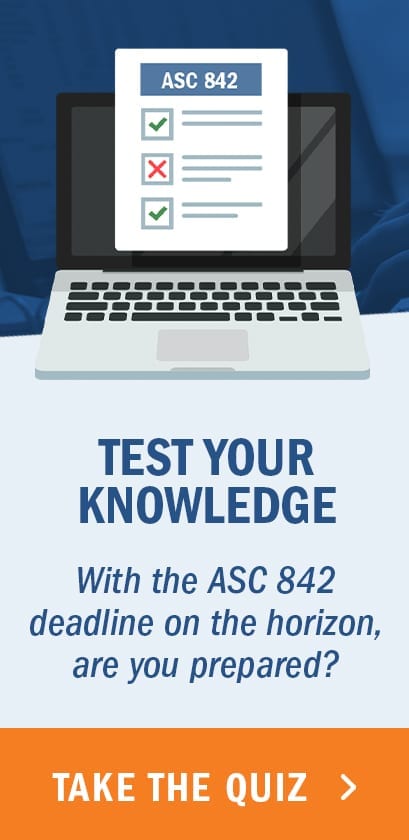This is the third segment of an article targeted at private companies who have not yet adopted the lease accounting standard, as well as their auditors. This article focuses on steps that private companies (and their auditors) can take during the current fiscal year to prepare for the effective date of the new lease standard for fiscal years that begin subsequent to December 15, 2021 and reduce the audit effort associated with the transition.
When companies implement ASC 842, the new lease accounting standard, many audit considerations will be included. As private companies begin to think about their future, they should anticipate additional audit procedures around leases that have not existed in audits under ASC 840. One of these items is the increase in substantive testing during the audit process. Substantive testing procedures are performed by the auditors to obtain reasonable evidence that there are no material misstatements at the relevant assertion level.
Because ASC 842 is a new standard with new balance sheet accounts and policy elections to be considered and documented, additional testing can be expected. Additional support will also be required to demonstrate the lack of material misstatements in the financial statements as a result of the adoption of the new lease accounting standards, as well as maintaining compliance going forward.
Completeness and existence
For operating leases, ASC 840 only requires lessees to recognize the income statement impact, so historically completeness of this portion of the lease portfolio hasn’t been of the utmost concern. Operating leases, including embedded leases within service agreements, were recorded as a contract expense or an operating lease expense. However, because operating leases are recognized on the balance sheet under ASC 842, an incomplete lease population can create a material omission in the presented operating lease liability and corresponding right of use (ROU) asset values. Companies can expect auditors to more closely scrutinize the completeness and accuracy of the lease portfolio in the future.
To ease the burden of the transition process, the FASB issued a package of practical expedients. One of the expedient elections within the package is the option to not reassess lease classification. However, companies are unable to grandfather errors or omissions, so to qualify for this election, a company must have a complete and accurate population of leases under ASC 840, which includes properly identifying all embedded leases.
Companies should have processes in place currently which allow them to maintain a complete list of leases regardless of the various internal teams and departments involved in the leasing process. The process should include a means by which the accounting team is made aware of the existence of any leases, as well as any changes in the lease population such as lease modifications. In addition to contacting the real estate and procurement departments to obtain listings of property and equipment leases, companies can also review their various rent expense accounts, and request the accounts payable department to review recurring payments, as recurring payments may indicate rent which could indicate the existence of a lease.
Documentation of policies
Companies will set themselves up for a smoother ASC 842 audit if they have a thorough understanding of the practices and procedures required for a successful audit of their capital leases under ASC 840. Many of the processes currently in place for ensuring a complete and accurate listing of capital leases, including capturing new and modified leases, can be expanded to include operating leases once ASC 842 is effective. As such, the more thorough a company’s control documentation is now, the easier it will be to establish appropriate control processes in the future under ASC 842. Additionally, if the auditors determine the controls over capital leases under ASC 840 are designed and operating effectively, it is likely they will come to the same conclusions under ASC 842.
Companies should adequately document their internal policies as soon as possible to promote a successful year-end audit under ASC 842. Documenting this information in advance can allow auditors to perform interim testwork, which can help identify any areas of weakness prior to the year end audit.
For example, some companies might establish a lease capitalization threshold policy to apply under ASC 842. Understanding any existing capitalization thresholds for capital assets and expenditures now can assist with the creation of a new capitalization threshold for leases. Companies should begin to discuss whether a capitalization threshold for ASC 842 is appropriate and, if so, document their conclusions, including the threshold amount, how they came to that determination, and justification for why it is deemed reasonable. A lease capitalization threshold can potentially reduce the quantity of leases included in the scope of ASC 842, and therefore the amount of time and effort spent on implementation. Having clear and supported documentation of the threshold conclusions upfront will assist in the audit process and facilitate discussions with auditors.
Documentation of the policy elections around the determination of discount rates to be used in the calculation of the lease liability is also necessary. The FASB requires companies to apply judgment for the determination of what discount rate to use and how to apply it to the lease portfolio. This rate will impact both the lease liability and the ROU asset calculations, so conclusions about what rate to use and how to apply it to the lease population (e.g., individually, by class of asset, or through a portfolio approach) should be carefully considered and documented. Companies may be able to reach out to the finance or treasury departments now regarding internal processes for determining discount rates and request assistance. If company-wide discount rates are not currently established, now is the time to begin the internal discussions. Notifying your auditors of these conclusions early and understanding their expectations could potentially reduce the amount of testing and effort required later.
Companies will make multiple other assumptions that impact the calculation of the lease liability and ROU asset balances. For example, the decision about whether or not a company is reasonably certain to exercise a renewal option directly impacts the lease term and total lease payment assumptions included in the lease liability calculation. This determination can also impact whether a lease is within the scope of ASC 842, as either immaterial or short-term, which again, directly impacts the overall balance sheet impact of the transition to ASC 842. Any assumptions companies make that require judgment should be documented and discussed with the auditors.
If companies are considering electing any of the practical expedients presented by the FASB, now is a good time for companies to understand what the implications of each of the practical expedients will be to their financial statements. When companies determine which, if any, of the practical expedients they will elect, those conclusions should be documented so that they can be evaluated by the auditors and presented as part of the qualitative disclosures for ASC 842.
Accuracy of calculations
Auditors perform substantive testing in direct correlation to the level of risk of material misstatement assessed. When the auditors previously planned their testing procedures, they evaluated whether the prior-year substantive procedures under ASC 840 would be sufficient. One of the reports that auditors rely on for their year-end audit is a roll-forward that shows the activity of an account balance from the end of the previously audited period to the end of the current period. Auditors then rely on the prior year audited balances and audit the activity that occurs to that balance throughout the year. While leases themselves are not a new type of business transaction, the associated lease liability and ROU asset will be new accounts for operating leases. Not only will the auditors be testing the activity in these new accounts throughout the year, but also the recorded opening balances, or transition entries. Given that auditors will not have prior year audited balances to use for comparison at the ASC 842 adoption date, companies should anticipate additional testing and validation of these new balances and their complex calculations.
For example, at the transition date, the new ROU asset balance is equal to the lease liability balance (calculated as the present value of the future lease payments) adjusted for the balances of deferred/prepaid rent, incentives, and unamortized capitalized initial direct costs that were accounted for under ASC 840. Due to the complexity of this calculation, testing its accuracy may involve compiling various invoices, receipts and reports. Ensuring the accuracy of these balances now, under ASC 840, will mitigate any surprises or adjustments during the transition to ASC 842 and ultimately lead to a smoother audit.
Lease modifications add an additional complexity to an already complex standard. Under ASC 840, lessee modifications to operating leases impacted the straight-line operating expense on a prospective basis, but did not require complicated recalculations. Under ASC 842, any modification to the terms and conditions of a contract resulting in a change of scope or consideration of a lease requires the lessee to determine whether the modification creates a new lease and, if not, how to properly adjust the existing lease liability and ROU asset balances at the effective date of modification. Companies will likely need to provide all relevant documentation for lease modifications to auditors so any calculations of balance reassessments and adjustments can be reviewed.
Presentation
The determination of whether a lease is a capital lease or an operating lease should be documented and supported for each lease. If this analysis was previously not completed for a large portion of a company’s leases due to immateriality, now may be a good time to revisit. One of the practical expedient elections available under ASC 842 allows for the continuation of treating capital leases identified under ASC 840 as finance leases under ASC 842. However, this election cannot be used for leases that were not correctly classified under ASC 840. Confirming the correct classification and documentation of existing leases will make the election of the practical expedient a viable choice.
While only capital leases are presented on the balance sheet under ASC 840, both operating and finance leases will be capitalized under ASC 842. In addition, ASC 842 requires operating and finance lease balances and other quantitative disclosures to be presented separately in the financial statements and footnotes. Therefore, it is critical that companies have the correct lease classifications of their lease portfolio.
Summary
A company’s first audit under ASC 842 will include analysis of the transition entries recorded upon adoption as well as the activity in the new lease accounts throughout the period. Ensuring calculations, disclosures and presentation are correct under ASC 840 sets a company up for a successful transition. If additional care is taken now, the company and the auditors can spend time reviewing the transition to ASC 842 instead of adjusting and correcting the accounting under ASC 840. Companies that thoroughly document policies and procedures under ASC 840 will see benefits of a smooth transition to ASC 842. Additionally, thorough preparation for the last audit under ASC 840 can provide comfort in electing to use the practical expedients available.




